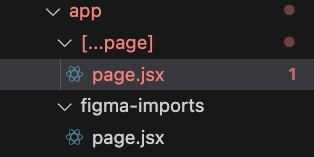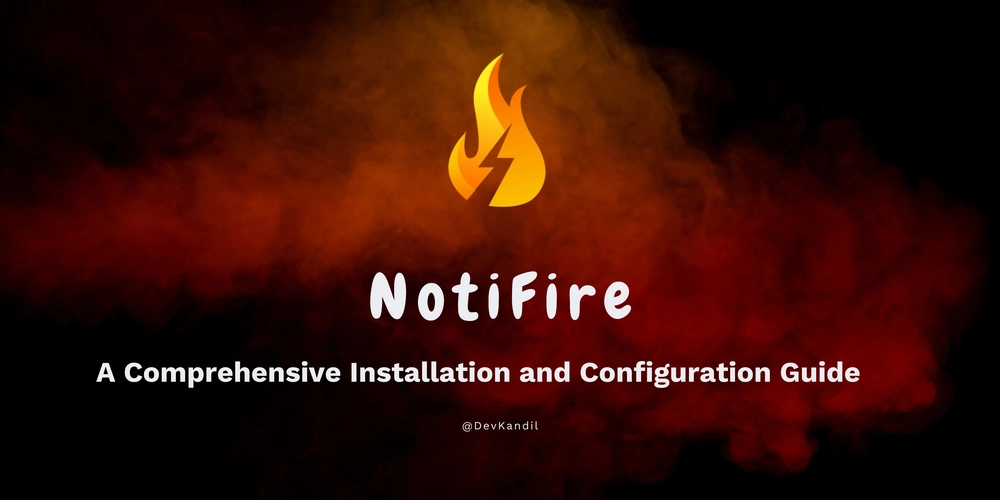Selenium, Open Source Funding, and Community-Driven Innovation: A Deep Dive into the Future
Abstract: This post explores Selenium’s journey from a simple browser automation tool to a global open source powerhouse. It examines its evolution, business model, and community governance while outlining its technical core concepts. In addition, we delve into emerging digital asset funding trends, including blockchain tokenization and decentralized governance. Through real-world use cases and comparisons with other leading projects, we highlight challenges, limitations, and strategic opportunities that foster sustainable open source innovation. By blending traditional funding models with cutting-edge blockchain strategies, Selenium’s story provides essential insights into a future where community input and corporate support intertwine seamlessly for continuous improvement. Introduction Selenium is more than just a tool for automating browser tasks; it is a beacon of community-driven innovation in the software testing domain. Initially developed as an internal testing utility at ThoughtWorks, Selenium evolved into SeleniumHQ – a widely adopted open source project under the robust Apache 2.0 License (Apache 2.0 License). Its journey not only illustrates significant technical evolution but also highlights a pioneering open source funding model that blends corporate sponsorships, community donations, and innovative blockchain funding mechanisms. As organizations demand rapid yet reliable testing methods, Selenium’s modular architecture, combined with a dynamic funding approach, empowers developers worldwide. This post will unpack Selenium’s historical context, its core components, and how emerging trends such as blockchain tokenization and decentralized governance (for example, through platforms like Arbitrum and Community Governance) are shaping the future of open source projects. Background and Context The Origin and Evolution of Selenium Selenium began its journey as an internal tool at ThoughtWorks designed for automated testing of web applications. As its capabilities became apparent, the community realized that its modular design (particularly the Selenium WebDriver and Selenium Grid) could cater to a wide range of testing environments. Over the years, Selenium has grown from a niche tool to a widely adopted framework that supports multiple programming languages and platforms. Historical Milestones: Inception at ThoughtWorks: An internal solution for regression and automation testing. Formation of SeleniumHQ: Transition from internal tool to a global open source project. Adoption of Apache 2.0 License: Ensures robust legal protection, encouraging corporate sponsorships and widespread adoption. Ecosystem of Open Source Funding Traditional funding models for open source projects often relied on volunteer contributions and sporadic donations. However, Selenium pioneered a phenomenon by combining: Corporate Sponsorship: Major enterprises rely on Selenium for quality assurance, which in turn, fund its development. Community Donations: Enthusiasts and independent developers contribute on a grassroots level. Grant Funding: Strategic project-specific grants support new features and overall ecosystem improvement. Emerging digital asset funding models, such as blockchain-based tokenization, add a new dimension. Projects now explore issuing digital tokens to reward contributions, enhance transparency, and decentralize governance. For instance, see discussions on Arbitrum and De-Fi Yield for insights into these mechanisms. Core Concepts and Features Understanding Selenium’s technical and financial ecosystem requires exploring its core concepts and community strategies. Here, we break down the primary components and funding strategies, highlighting how traditional and modern innovations converge. Modular Architecture and Scalability Selenium is built on a modular design that offers unparalleled scalability and flexibility. Its key technical components include: Component Primary Function Key Benefit Selenium WebDriver Automates browser actions Cross-browser compatibility and reliability Selenium Grid Runs tests in parallel Scalable testing across multiple platforms Language Bindings Integrates with languages like Java, Python, and C# Wider community support and flexibility These core modules empower Selenium to serve a global developer community, ensuring consistent behavior across updates and different browser environments. Transparent Funding Mechanisms Selenium’s funding strategy is a hybrid model that ensures sustainability: Corporate Sponsorship: Big tech companies invest in the project, benefiting from its stability and continuous updates. Community Donations: Contributions from the wider developer community help cover operational and maintenance costs. Digital Asset Funding: Emerging methods such as blockchain tokenization offer new ways to incentivize contributions. Digital to
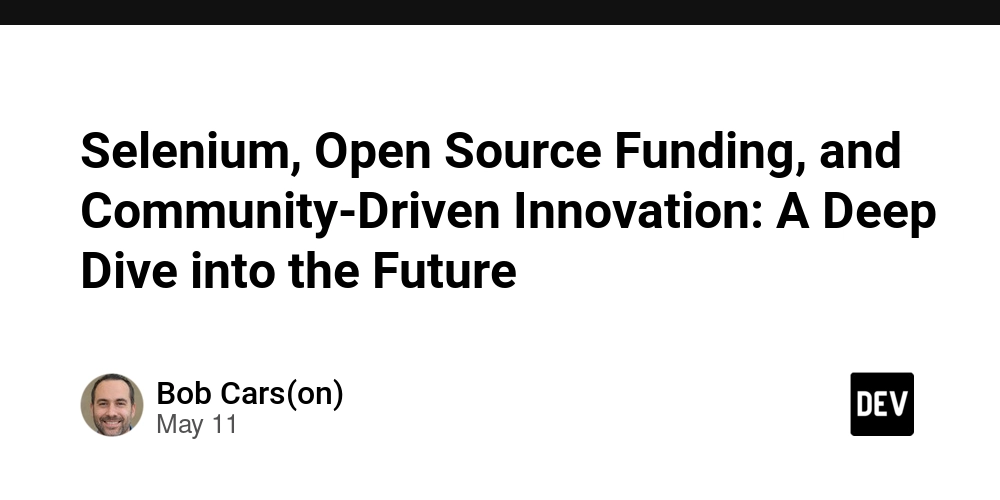
Abstract:
This post explores Selenium’s journey from a simple browser automation tool to a global open source powerhouse. It examines its evolution, business model, and community governance while outlining its technical core concepts. In addition, we delve into emerging digital asset funding trends, including blockchain tokenization and decentralized governance. Through real-world use cases and comparisons with other leading projects, we highlight challenges, limitations, and strategic opportunities that foster sustainable open source innovation. By blending traditional funding models with cutting-edge blockchain strategies, Selenium’s story provides essential insights into a future where community input and corporate support intertwine seamlessly for continuous improvement.
Introduction
Selenium is more than just a tool for automating browser tasks; it is a beacon of community-driven innovation in the software testing domain. Initially developed as an internal testing utility at ThoughtWorks, Selenium evolved into SeleniumHQ – a widely adopted open source project under the robust Apache 2.0 License (Apache 2.0 License). Its journey not only illustrates significant technical evolution but also highlights a pioneering open source funding model that blends corporate sponsorships, community donations, and innovative blockchain funding mechanisms.
As organizations demand rapid yet reliable testing methods, Selenium’s modular architecture, combined with a dynamic funding approach, empowers developers worldwide. This post will unpack Selenium’s historical context, its core components, and how emerging trends such as blockchain tokenization and decentralized governance (for example, through platforms like Arbitrum and Community Governance) are shaping the future of open source projects.
Background and Context
The Origin and Evolution of Selenium
Selenium began its journey as an internal tool at ThoughtWorks designed for automated testing of web applications. As its capabilities became apparent, the community realized that its modular design (particularly the Selenium WebDriver and Selenium Grid) could cater to a wide range of testing environments. Over the years, Selenium has grown from a niche tool to a widely adopted framework that supports multiple programming languages and platforms.
-
Historical Milestones:
- Inception at ThoughtWorks: An internal solution for regression and automation testing.
- Formation of SeleniumHQ: Transition from internal tool to a global open source project.
- Adoption of Apache 2.0 License: Ensures robust legal protection, encouraging corporate sponsorships and widespread adoption.
Ecosystem of Open Source Funding
Traditional funding models for open source projects often relied on volunteer contributions and sporadic donations. However, Selenium pioneered a phenomenon by combining:
- Corporate Sponsorship: Major enterprises rely on Selenium for quality assurance, which in turn, fund its development.
- Community Donations: Enthusiasts and independent developers contribute on a grassroots level.
- Grant Funding: Strategic project-specific grants support new features and overall ecosystem improvement.
Emerging digital asset funding models, such as blockchain-based tokenization, add a new dimension. Projects now explore issuing digital tokens to reward contributions, enhance transparency, and decentralize governance. For instance, see discussions on Arbitrum and De-Fi Yield for insights into these mechanisms.
Core Concepts and Features
Understanding Selenium’s technical and financial ecosystem requires exploring its core concepts and community strategies. Here, we break down the primary components and funding strategies, highlighting how traditional and modern innovations converge.
Modular Architecture and Scalability
Selenium is built on a modular design that offers unparalleled scalability and flexibility. Its key technical components include:
| Component | Primary Function | Key Benefit |
|---|---|---|
| Selenium WebDriver | Automates browser actions | Cross-browser compatibility and reliability |
| Selenium Grid | Runs tests in parallel | Scalable testing across multiple platforms |
| Language Bindings | Integrates with languages like Java, Python, and C# | Wider community support and flexibility |
These core modules empower Selenium to serve a global developer community, ensuring consistent behavior across updates and different browser environments.
Transparent Funding Mechanisms
Selenium’s funding strategy is a hybrid model that ensures sustainability:
- Corporate Sponsorship: Big tech companies invest in the project, benefiting from its stability and continuous updates.
- Community Donations: Contributions from the wider developer community help cover operational and maintenance costs.
- Digital Asset Funding: Emerging methods such as blockchain tokenization offer new ways to incentivize contributions. Digital tokens can represent a stake in the project, ensuring transparency and direct rewards for contributions. More insights are available through platforms like Arbitrum and Open Source License Compatibility.
Licensing and Legal Assurance
The adoption of the Apache 2.0 license is a cornerstone of Selenium’s legal framework. This license ensures:
- Freedom to Modify: Developers can customize and extend Selenium without legal hurdles.
- Patent Protection: Safeguards against litigation, making the framework attractive to corporate partners.
- Legal Transparency: Clear open source guidelines build trust within the community.
Community Governance and Open Collaboration
Selenium thrives through community-led governance. This open model is characterized by:
- Collaborative Decision-Making: Discussions on platforms such as GitHub and public mailing lists allow the community to vote on key changes.
- Inclusive Contribution Process: Transparent code reviews and iterative feedback facilitate rapid and stable development cycles.
- Regular Community Events: Conferences, webinars, and meetups promote knowledge sharing and collaborative development.
Applications and Use Cases
Selenium’s robust architecture and innovative funding approach empower a wide range of applications. Let’s review a few practical examples:
Automated Testing in Enterprise Environments
Case Study: Financial Services Testing
- Scenario: A major financial institution deploys Selenium WebDriver to automate its online banking portal tests.
- Implementation: Using Selenium Grid, tests run concurrently across several browser platforms.
- Outcome: Enhanced test coverage reduces manual errors and accelerates the development cycle. This reliability is crucial to avoid costly software disruptions in the financial sector.
Continuous Integration Pipelines in E-Commerce
Case Study: Agile E-Commerce Platforms
- Scenario: An online retailer integrates Selenium into their Jenkins-based CI/CD pipeline.
- Implementation: Automated test suites run with every code push to prevent regression issues.
- Outcome: Increased deployment frequency and improved quality assurance lead to higher customer satisfaction, demonstrating Selenium’s value in fast-paced environments.
Integrating Blockchain Funding Models in Open Source Projects
Beyond traditional applications, Selenium’s funding model is now a blueprint for integrating emerging blockchain practices:
Tokenization for Developer Rewards:
Digital tokens can be issued to recognize code contributions. Such models enhance accountability and financial transparency. Projects might leverage decentralized protocols akin to those in Arbitrum and Ethereum Interoperability.Decentralized Governance:
Leveraging blockchain-based voting systems enables transparent and unbiased decision-making. This model encourages broader participation across the community.-
Real-World Benefits:
- Enhanced Quality Assurance: Automated testing reduces human intervention while increasing accuracy.
- Scalable Funding Models: Hybrid financial support ensures project longevity even during economic downturns.
- Community Empowerment: Transparent and digital funding mechanisms boost developer participation and trust.
A brief bullet list summarizing these benefits:
- Increased transparency in funding and governance.
- Reduced dependency on sole corporate sponsors.
- Enhanced community engagement through tokenization.
- Scalable testing and automation, leading to faster feature rollouts.
Challenges and Limitations
Despite Selenium’s established success, several challenges remain across technical and financial dimensions.
Technical Challenges
Maintenance Complexity:
Continuous support for multiple browsers and platforms demands constant updates. This rapidly evolving codebase requires diligent maintenance.Browser Compatibility:
Frequent browser updates may lead to temporary incompatibility issues until Selenium is updated accordingly.Resource Constraints:
Limited volunteer availability and corporate priorities can sometimes slow down innovation and critical security updates.
Funding and Financial Limitations
Over-Reliance on Corporate Sponsorship:
A heavy reliance on corporate funding can expose the project to economic shifts. Diversifying income sources through blockchain tokenization may mitigate this risk.Volatility of Donation Streams:
Individual donations do not guarantee a steady income, introducing unpredictability.Emerging Tokenization Risks:
While blockchain funding offers transparency, it also introduces regulatory and security risks that are still being ironed out by the industry.
Governance and Adoption Challenges
Collaborative Decision-Making Bottlenecks:
With a growing contributor base, achieving consensus on core changes can slow down progress.Intellectual Property Concerns:
Despite the Apache 2.0 license assurances, unresolved patent issues may create friction.Combining Traditional and Digital Funding:
Integrating blockchain token models with conventional funding requires new frameworks and compliance measures, which may complicate governance.
A table summarizing these challenges:
| Aspect | Challenges |
|---|---|
| Technical | Maintenance, browser compatibility, resource constraints |
| Financial | Over-reliance on corporate funding, donation volatility, token risks |
| Governance | Decision-making delays, IP concerns, integration complications |
Future Outlook and Innovations
The future of Selenium and similar open source projects is rich with opportunities. New trends and innovations are set to revolutionize both technical practices and funding strategies.
Integration of Blockchain and Decentralized Governance
Blockchain Tokenization:
As further refined funding models become mainstream, digital tokens could reward every code contribution transparently. This model supports a decentralized approach that reduces funding concentration and mitigates risks.Decentralized Autonomous Organizations (DAOs):
Using DAO models for community governance may allow contributors to directly vote on project direction and funding allocation, leading to a more democratic governance structure.
A further reading resource on this subject is the Arbitrum and De-Fi Yield article.
Automation and Scalability Enhancements
Artificial Intelligence Integration:
AI and machine learning can optimize test case generation, defect prediction, and overall test management. Automation improvements can lead to richer CI/CD integrations and continuous performance upgrades.Cloud-Based CI/CD Integration:
As cloud platforms become increasingly entrenched in software development lifecycles, we can expect smoother integration of Selenium with these technologies, making it a critical backbone for testing pipelines.
Regulatory and Security Improvements
Enhanced Security Protocols:
Both traditional funding models and blockchain tokenization require rigorous security audits. Smart contract and protocol audits will play an increasing role in mitigating risks.Regulatory Harmonization:
Efforts to standardize regulations around digital assets will further solidify the role of blockchain funding. This regulatory clarity will attract more stable investment streams while ensuring community safety.
Collaborative Ecosystem Growth
Cross-Project Learning:
Selenium’s model of blending corporate sponsorship with community-driven support sets a template that other projects like the Linux kernel and Mozilla Firefox have also leveraged. These projects continue to evolve through shared governance models that can support innovations in blockchain funding.Inter-Industry Partnerships:
Initiatives among tech giants, startups, and academic institutions promise to drive further improvements in open source projects, ensuring equitable resource distribution and faster adaptation to emerging technologies.
For further perspective, check out related discussions on Open Source Funding for New Developers and Sustaining the Backbone of Technology.
Summary
Selenium’s evolution from an internal tool to a globally recognized testing framework underscores the potential of community-driven open source projects. Its modular architecture and successful hybrid funding model, which combines traditional corporate sponsorship with innovative blockchain tokenization, offer a roadmap for sustainable technological innovation. While challenges persist—ranging from technical maintenance to financial volatility—the proactive integration of decentralized governance and digital asset funding signals a promising future.
Key takeaways from this deep dive include:
- Robust Modular Design: Selenium’s architecture supports cross-browser automation and scalability.
- Diverse Funding Mechanisms: A blend of corporate sponsorship, community donations, and emerging blockchain tokenization ensures resilience.
- Transparent Community Governance: Open forums and collaborative decision-making build trust and enable rapid innovation.
- Challenges and Future Trends: Addressing browser compatibility, maintenance, and regulatory uncertainties is crucial, while AI integration and DAO-based governance are poised to redefine future updates.
A summarized bullet list of future opportunities:
- Decentralized Governance through DAO models.
- Enhanced Security via regular smart contract audits.
- AI and ML Integration for smarter test management.
- Regulatory Harmonization to offer reliable blockchain funding.
In conclusion, Selenium not only leads as a browser automation tool but also sets a new standard for open source funding and community collaboration. Its ongoing innovations—both in technical advancements and financial models—demonstrate that sustainable open source innovation is achievable when traditional values align with modern digital strategies.
For further detailed insights, readers are encouraged to explore the Original Article on Selenium, Open Source Funding, and Community-Driven Innovation as well as additional resources available across our linked content.
Additional Resources
- Arbitrum and Community Governance
- Arbitrum and De-Fi Yield
- Open Source Funding for New Developers
- Sustaining the Backbone of Technology
- Apache 2.0 License
For further reading on evolving funding models and decentralized innovations, check out these insightful Dev.to posts:
- Arbitrum: A Game Changer for Ethereum’s Scalability
- Unlocking Blockchain’s Potential: Arbitrum, Fraud Proofs, and Open Source
- Navigating Contributor License Agreements in Open Source Projects
Embracing technology, innovation, and community collaboration will pave the way for a future where open source software remains at the forefront of global digital development.
Happy coding, testing, and innovating!





































































































































































![[The AI Show Episode 147]: OpenAI Abandons For-Profit Plan, AI College Cheating Epidemic, Apple Says AI Will Replace Search Engines & HubSpot’s AI-First Scorecard](https://www.marketingaiinstitute.com/hubfs/ep%20147%20cover.png)










































































































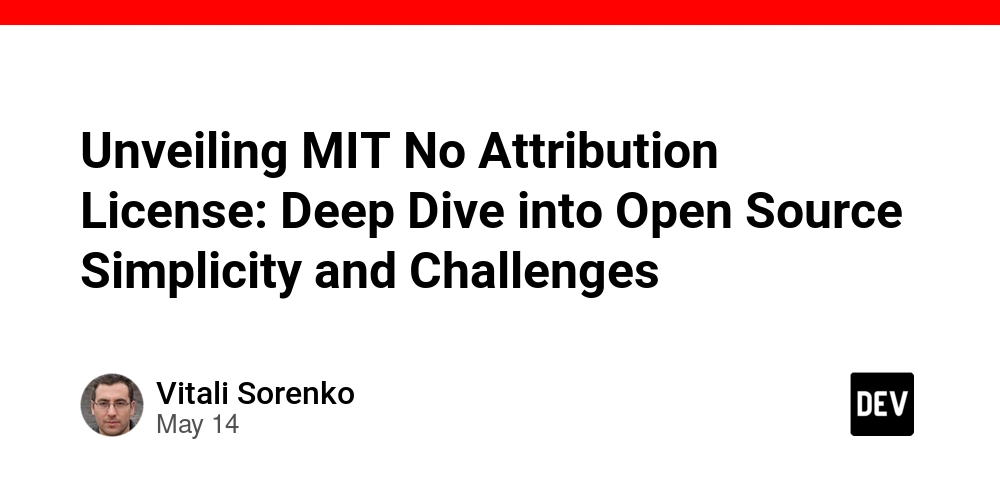










































































































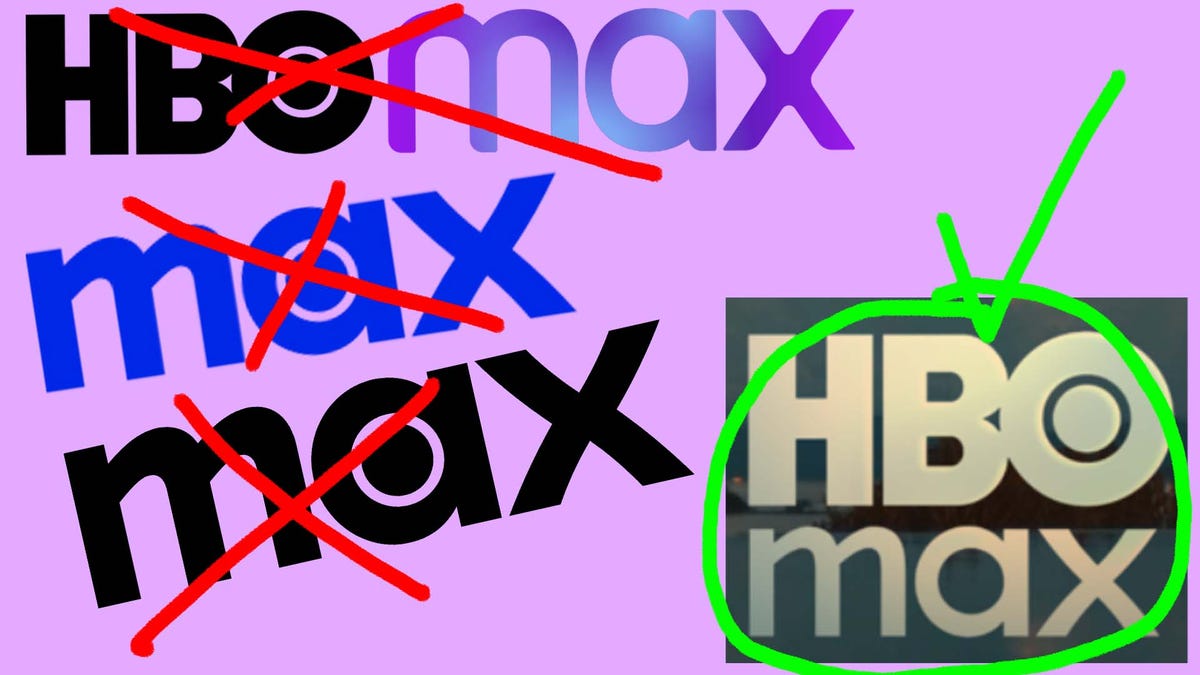











































_Gang_Liu_Alamy.jpg?width=1280&auto=webp&quality=80&disable=upscale#)

















































































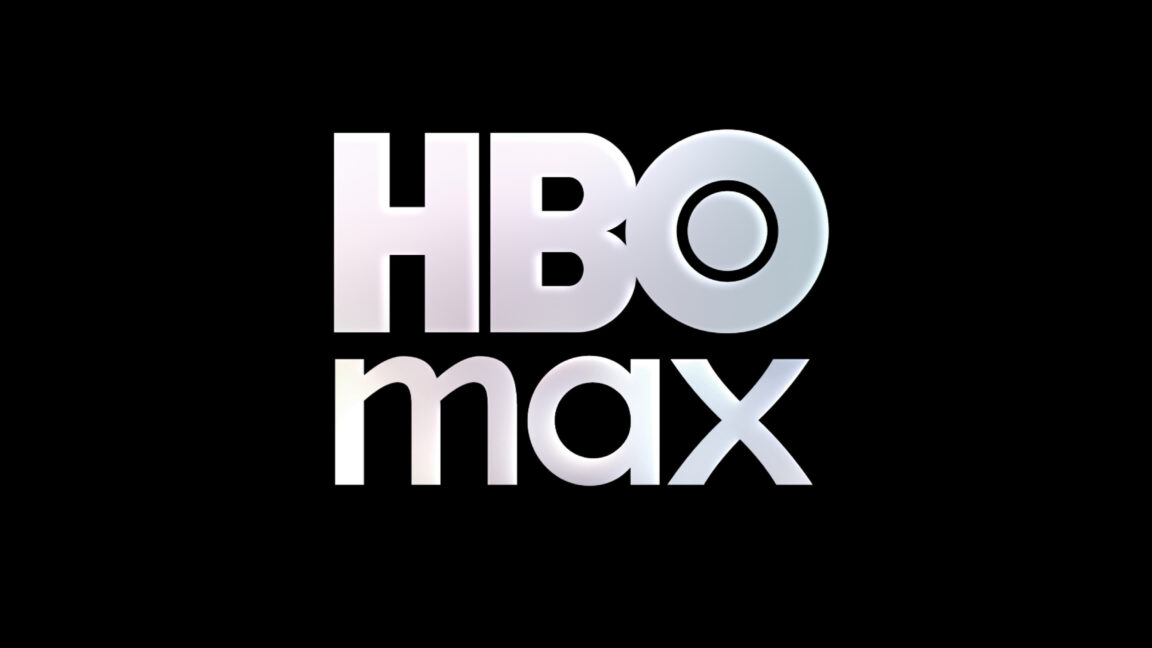


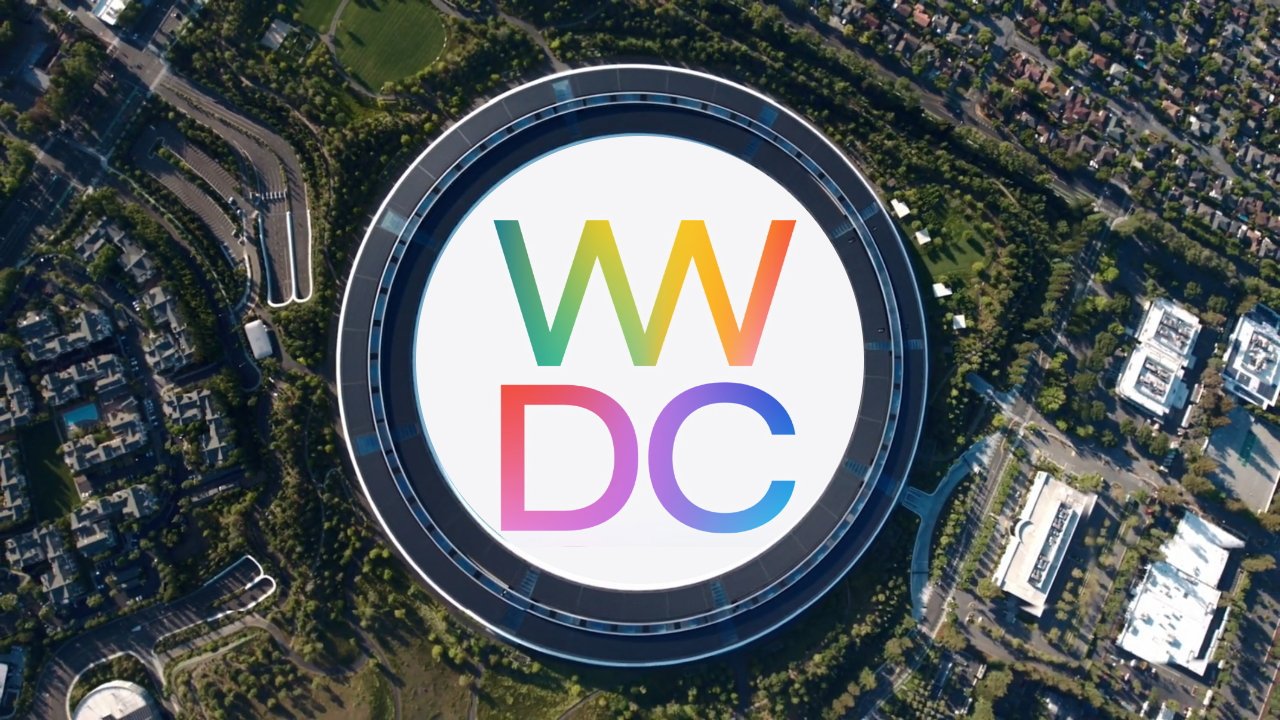




























![Apple's 20th Anniversary iPhone May Feature Bezel-Free Display, AI Memory, Silicon Anode Battery [Report]](https://www.iclarified.com/images/news/97323/97323/97323-640.jpg)

![Apple Planning Bezel-Free iPhone With 'Four-Sided Bending' Display [Report]](https://www.iclarified.com/images/news/97321/97321/97321-640.jpg)


































































































